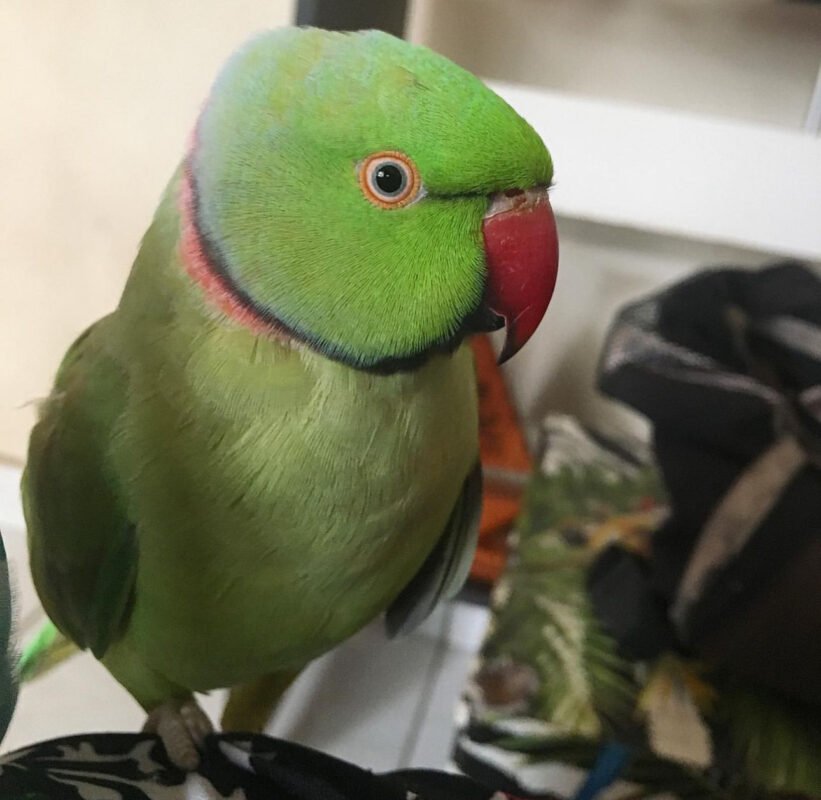Blog
Common Illnesses in Ringneck Parrots and How to Prevent Them
Ensuring the health and well-being of our feathered companions, such as Ringneck Parrots, is a crucial responsibility for pet owners. Just like any other living being, these colorful and intelligent birds require proper care and attention to thrive. In this blog post, we will delve into the world of Ringneck Parrot health, exploring common illnesses, preventative measures, and tips for maintaining the vitality of these beloved avian companions. Join us as we uncover the key aspects of Ringneck Parrot health and learn how to provide the best possible care for these fascinating feathered friends.
1. Common Illnesses in Ringneck Parrots
Avian Pox:
Avian pox is a viral disease that affects birds, including Ringneck Parrots. Here’s a brief overview:
Avian pox is caused by a virus that can be transmitted through direct contact with infected birds, contaminated surfaces, or mosquito bites. The disease manifests in two forms: dry pox, characterized by wart-like growths on the skin and mucous membranes, and wet pox, which affects the respiratory and digestive tracts.
Symptoms of avian pox in Ringneck Parrots may include lesions on the skin, beak, eyes, and feet, as well as respiratory distress, lethargy, and decreased appetite. While avian pox is usually not fatal, it can weaken the bird’s immune system and make them more susceptible to other infections.
Treatment for avian pox focuses on supportive care, such as keeping the bird comfortable, well-fed, and hydrated. In some cases, antiviral medications may be prescribed by a veterinarian to help manage the symptoms
Psittacosis (Parrot Fever):
Psittacosis, also known as Parrot Fever or chlamydiosis, is a zoonotic disease caused by the bacterium Chlamydia psittaci. Here’s an overview:
Psittacosis can affect a variety of birds, including parrots, parakeets, cockatiels, and other species. Humans can also contract the disease through contact with infected birds, their droppings, or respiratory secretions.
Symptoms of psittacosis in birds may include respiratory signs like sneezing, coughing, and difficulty breathing, as well as greenish urates, lethargy, and weight loss. In humans, symptoms can range from mild flu-like symptoms to severe pneumonia, so it’s important to seek medical attention if you suspect exposure to the bacteria.
Psittacosis is typically treated with antibiotics, both in birds and humans. It’s essential to consult a veterinarian if you suspect your bird may have psittacosis, as early detection and treatment are crucial for a successful recovery.
Aspergillosis:
Aspergillosis is a fungal infection caused by the Aspergillus species, commonly found in the environment. Here’s an overview:
Aspergillosis can affect birds, particularly those with weakened immune systems or living in poor environmental conditions. It can manifest in different forms, such as air sacculitis, pneumonia, or even systemic infections.
Symptoms of aspergillosis in birds may include difficulty breathing, wheezing, tail-bobbing, weakness, loss of appetite, and nasal discharge. Early detection and treatment are crucial for a better prognosis, so it’s important to consult a veterinarian if you suspect your bird may be affected.
Diagnosis of aspergillosis in birds often involves a combination of clinical signs, radiographs, and sometimes specific tests like cultures or blood tests. Treatment may include antifungal medications, supportive care, and improving the bird’s environment to reduce fungal exposure.
Preventing aspergillosis includes providing a clean and well-ventilated living environment for your birds, avoiding damp conditions, and ensuring proper nutrition to support their immune system.
Beak and Feather Disease:
Beak and Feather Disease (BFD) is a viral disease that primarily affects parrots, cockatoos, and other birds in the Psittacidae family. Here’s some key information about BFD:
BFD is caused by a circovirus that attacks the cells in the feathers, beak, and immune system of infected birds. This results in abnormal feather growth, beak deformities, and a weakened immune system, making affected birds more susceptible to secondary infections.
Symptoms of BFD in birds may include feather loss, abnormal feather growth (like frayed feathers), beak abnormalities (such as overgrowth or deformities), weight loss, lethargy, and an overall decline in health.
Diagnosing BFD usually involves a combination of physical examination, blood tests, and sometimes additional tests like feather or tissue samples for viral testing. Unfortunately, BFD is a viral disease with no cure, so treatment focuses on managing symptoms and supporting the bird’s immune system.
Preventing the spread of BFD involves strict quarantine measures for new birds, regular veterinary check-ups, maintaining good hygiene practices, and avoiding exposure to potentially infected birds or contaminated environments.
Polyomavirus:
Polyomavirus is another viral disease that can affect birds, particularly parrots, canaries, finches, and other avian species. Here are some key points about Polyomavirus:
Polyomavirus primarily affects young birds, especially those under one year of age. It can be transmitted horizontally (from bird to bird) or vertically (from parent to offspring).
Symptoms of Polyomavirus in birds can vary widely but may include sudden death, weight loss, delayed crop emptying, regurgitation, dehydration, hemorrhages (especially in the skin and internal organs), and in severe cases, organ failure.
Diagnosing Polyomavirus often involves a combination of physical examination, blood tests, and sometimes additional tests like DNA testing or histopathology to detect the virus. Like Beak and Feather Disease, there is no specific treatment for Polyomavirus, so supportive care is essential.
Bird Respiratory Infections:
Bird respiratory infections are a common health issue that can affect birds of all species. These infections can be caused by a variety of factors, including bacteria, viruses, fungi, and environmental stressors. Here’s an overview of bird respiratory infections:
- Causes: Respiratory infections in birds can be caused by pathogens such as bacteria (e.g., Mycoplasma, Chlamydia), viruses (e.g., Avian Influenza, Infectious Bronchitis Virus), and fungi (e.g., Aspergillus). These pathogens can be transmitted through direct contact with infected birds, contaminated surfaces, or the inhalation of airborne particles.
- Symptoms: Birds with respiratory infections may exhibit symptoms like sneezing, coughing, nasal discharge, wheezing, difficulty breathing, and in severe cases, open-mouthed breathing. Other signs include reduced activity, decreased appetite, and changes in vocalization. Early detection of these symptoms is crucial for timely intervention.
- Diagnosis: Avian veterinarians can diagnose respiratory infections through a combination of physical examination, blood tests, radiographs, and specialized tests like tracheal washes or swabs to identify the causative agent. Accurate diagnosis helps determine the appropriate treatment plan.
- Treatment: Treatment of bird respiratory infections often involves a combination of antibiotics, antifungals, supportive care, and environmental management. It’s important to follow the veterinarian’s instructions regarding medication administration, isolation of infected birds, and environmental modifications to promote recovery.
- Prevention: Preventing respiratory infections in birds requires maintaining good hygiene practices, providing proper ventilation, reducing stressors, and implementing biosecurity measures. Quarantining new birds before introducing them to existing flocks can help prevent the spread of infections.
2. Symptoms to Watch Out For
- Changes in appetite
- Lethargy
- Difficulty breathing
- Discharge from eyes or nostrils
- Changes in droppings
3. Preventative Measures
- Providing a balanced diet
- Regular veterinary check-ups
- Maintaining a clean environment
- Avoiding exposure to other sick birds
- Quarantine new birds before introducing them to your flock

